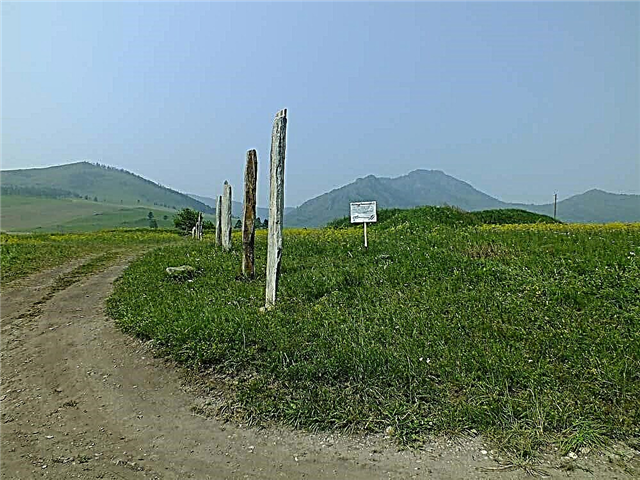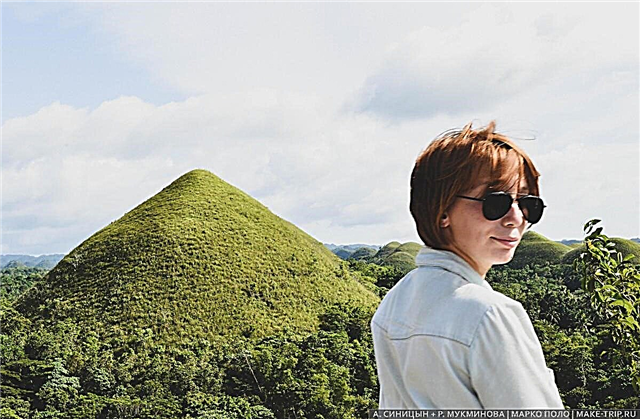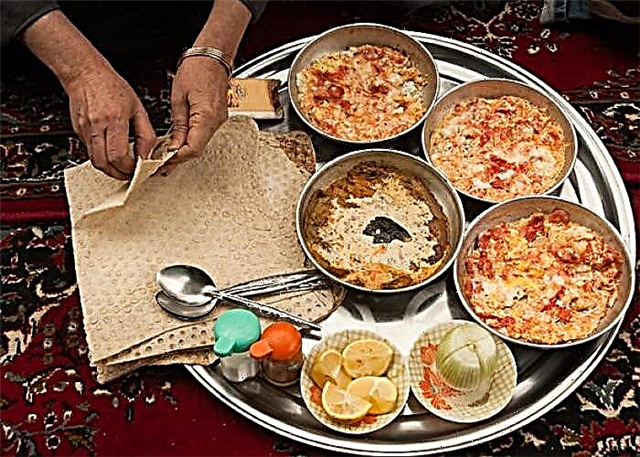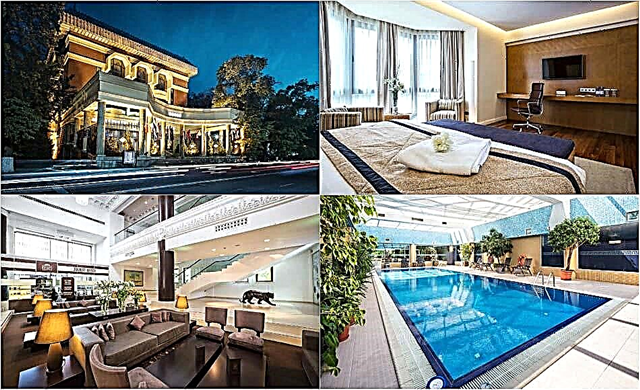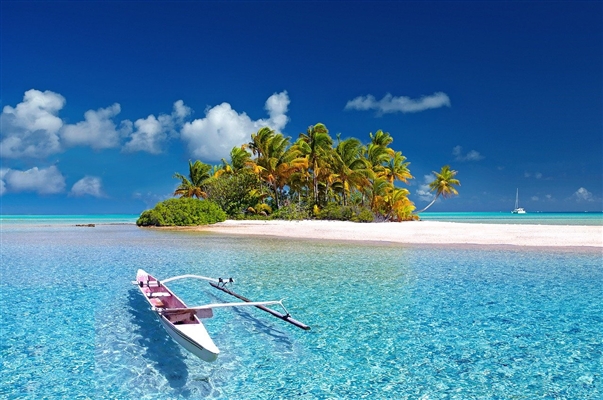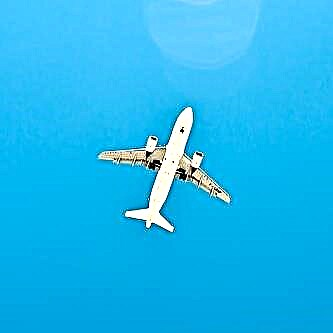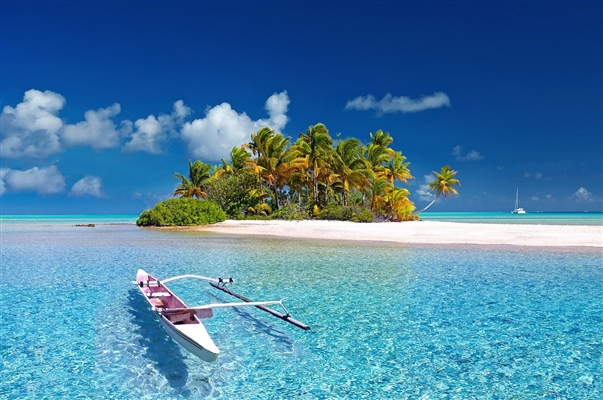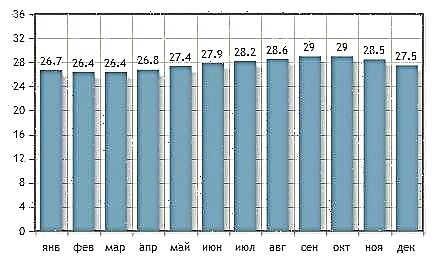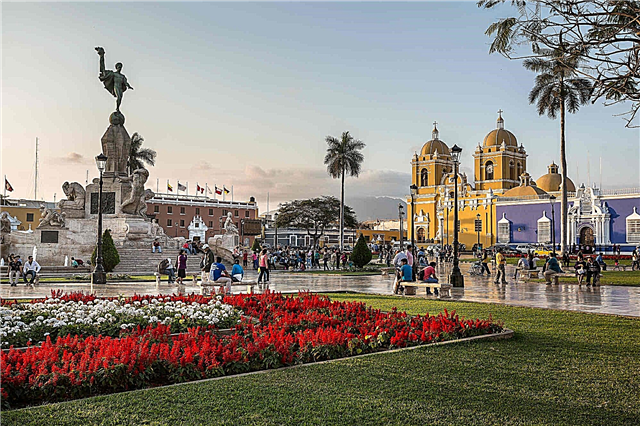The South American state of Peru is washed from the east by the waters of the Pacific Ocean. The largest city in the country is the capital Lima: it is almost 10 times more populous than Arequipa. The smallest of the list, São Vicente de Cañete, has a little more than 70 thousand inhabitants. But he also has something to offer tourists, including a local wine tasting or the opportunity to explore a unique Japanese temple.
Peru's urban growth is still hampered by transport problems. For example, only one full-fledged road leads to Pucallpa, which is often flooded during heavy rains. Economic factors and loyalty to traditions are also important: small settlements are also scattered even in remote corners of the country, and isolation for the descendants of the Indians is only a plus.
The largest cities in Peru
List of the largest cities in terms of population in the country.
Lima
The capital of Peru is ideally located: on the one side - the Pacific Ocean, on the other - the Andes, on the third - the Rimac River. The historical part of the city - Old Lima - has a clear layout, and its main buildings are built in the Creole style. The architectural complex of the Main Square - the Cathedral, the Town Hall, the Presidential Palace. There is also a beautiful area on the coast. Its name translates as "Green Coast". In Lima, festivals, bullfights, cockfights are held.
Population - 10 795 500 people (2020).

Arequipa
The gastronomic capital of the country is located in the southern part of Peru. The city is the seat of the Constitutional Court. The historical center - buildings from the time of colonization - is included in the UNESCO World Heritage List. The main material for the walls of buildings is white volcanic stone. From Arequipa start excursions to the Colca Canyon - the second deepest on the planet and to the hot springs near Chivaya.
Population - 1,081,900 (2020).

Trujillo
It stands on the coast of the Pacific Ocean and at the mouth of the Moche River. The city has preserved architectural monuments of different cultures, including the ancient ones - Chimu and Mochica. The main excursion route is to see the pyramids of the Sun and the Moon. Nearby are the resort of Huanchaco, where surfers from all over the world gather during the season, and the city of Chan Chan, where archaeological excavations do not stop.
Population - 986 800 people (2020).

Chiclayo
The Pacific coast is only 13 kilometers from the city. In the very center of Chiclayo, the Main Park is divided into two parts. On the north side there is a municipal palace, partly given over to a museum. On the central square there is a cathedral, to the creation of which Eiffel had a hand. Agricultural fields are concentrated in the vicinity of the city. Rice, sugarcane and cotton are grown here.
Population - 651,100 people (2020).

Piura
The industrial center of the north of the country. The local museum contains exhibits of all cultures of these territories of the pre-Columbian era. The Carmen Church occupies a special place among the architectural monuments. Comfortable beaches from anywhere in Piura can be reached in less than an hour. The evergreen carob groves are ideal for walking. Tennis courts and golf courses are available and in demand all year round.
Population - 522 400 people (2020).

Cuzco
One of the most ancient cities on Earth. In 1950, an earthquake damaged the Dominican monastery and modern buildings, and the architecture of the Inca era was not affected. Sightseeing: the Kompania church, the 12-corner stone, geoglyphs on the mountains surrounding Cusco, the statue of Christ, the Machu Picchu, Inca and pre-Columbian art museums, the citadel of Saxahuaman.
Population - 477 300 people (2020).

Huancayo
The capital of the province of the same name. Folk crafts are developed in Huancayo. In recent years, neighborhoods have been built up with high-rise buildings, more and more modern buildings appear on the streets. At the same time, buildings from the colonial period remain an important part of the urban plan. Local holidays are distinguished by their duration, an abundance of decorations and treats, therefore, they attract guests from all over the country.
Population - 441 400 people (2020).

Iquitos
The city was founded by Jesuit monks. They also built the first river port on the Amazon. Legends about the treasures of El Dorado are associated with this area. The gallery of Cesar Calvo de Araujo works in Iquitos: the artist painted mainly his native places and compatriots. An unusual urban area called Belém. During rainy periods, this typical Indian village can only be reached by boat.
Population - 422 900 people (2020).
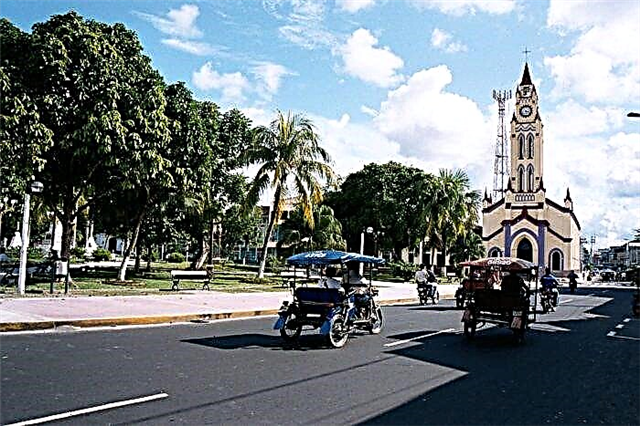
Chimbote
Located on the shores of the bay of the same name. The city has become an important transport hub. Attractions: panoramic view from the Cerro de la Paz mountain, Isla Blanca boulevard with its fountains and marble sculptures, White Island, which is so named because of the color of the earth. Chimbot hosts two big festivals: in honor of Holy Week and in honor of the city's birthday.
Population - 386 100 people (2020).

Pucallpa
The coastline of the Ucayali River stretches. Only in the middle of the last century, the city ceased to be isolated from the outside world, thanks to the construction of the road. However, during prolonged rainstorms, Pucallpa often experiences difficulties with communications and transport networks. With the help of air links and the river port, you can get to Lima. The city quarters are in stark contrast to each other, from traditional to modern.
Population - 380,000 people (2020).

Tacna
From here to the border with Chile, about 36 kilometers. Tacna has a reputation for being a very patriotic city: many streets are named after the country's independence fighters. Sightseeing: the railway museum, whose collection includes hundreds of unique exhibits, Bab-ul-Islam - the first mosque in the country, the central square, built according to the project of the Eiffel.
Population - 321 700 people (2020).

Ica
The city on this site was founded by the Spaniards in the middle of the 16th century. It was destroyed by an earthquake, and even then the current Ika appeared. The main museums are the Dr. Cabrera Museum and his collection of stone engravings, as well as the Museum of Mummies. Among the sand dunes, 5 kilometers from the city, the Huacachina oasis is fragrant. South of Ica, there is another unique attraction - the Nazca paintings.
Population - 310 600 people (2020).

Juliaca
The current city on these lands in the southeast of the country was built relatively recently, so it is devoid of historical buildings and architectural monuments. There is a resort potential here, which has not been fully realized. Tourists often use the area as a transit point. From Juliaca, excursions to Lake Titica, the largest freshwater reservoir in South America, start.
Population - 308 400 people (2020).

Ayacucho
Conveniently located in the south of the country on the road connecting Lima and Cuzco. Local artisans work with wood, leather and silver, their products are the best souvenirs of the region. At the beginning of the last century, there were more than two dozen churches in the city. Most of them have survived to this day unchanged. The oldest settlement in Peru, Pikimachai, is located 24 kilometers from Ayacucho.
Population - 235 200 people (2020).

Cajamarca
Location - mountains in the north of Peru. It bears the unofficial title of "capital of the Peruvian carnival". Most of the buildings date back to the 17th-18th centuries. Traditional two-storey houses are covered with gable roofs and decorated with patterned stones. The main attractions are the La Recoleta and Belém complexes. On Palm Sunday, the Festival of the Crosses takes place in Cajamarca.
Population - 223 900 people (2020).

Huanuco
Lies on the eastern slopes of the Central Cordillera Andes. The city played an important role in the country's war of independence. The main architectural sights are the churches of the colonial period. The region as a whole is agricultural, they grow fruits, coffee, cotton, cane. In Huanuco, distribution of finished products takes place, trade networks are established.
Population - 214 800 people (2020).

Sulyana
It stretches along the valley of the Chira River. The surrounding area is covered with rice fields, as well as groves of banana and coconut trees. In the past, these territories belonged to Indian peoples, including the Incas, Chimu, Moche, and Talan. You can learn about their history at the local museum. Near the town there is Poechos reservoir, suitable for both beach and water activities.
Population - 204 200 people (2020).

Huacho
Located at the mouth of the Waura River, as well as on the Pacific coast. Salt is mined 30 kilometers from Huacho. Most of the fishing vessels are moored in the port. There is also a fish and seafood processing plant. The main attraction of the area is the monumental archaeological site of Bandurria. The city hosts the annual Guinea Pig Festival.
Population - 165 900 people (2020).

Tarapoto
The city stands in a picturesque corner of Peru: the foothills of the Andes and the Mayo River make the terrain unique. Rafting, hiking and outdoor activities are popular among tourists. 14 kilometers from Tarapoto you can find the Ahuashiyaku waterfall, which is about 40 meters high. Exploration of the nearby archaeological site Polis with its petroglyphs and drawings continues.
Population - 162,700 people (2020).

Puno
On the coast of Titicaca, surrounded by smaller lakes, the city of Puno is founded. It is called the cultural capital of Peru. Local folklore, music and dance are known far beyond the borders of the country. On the floating islands made of reed, the Uros Indians still live, having preserved the traditions of their ancestors. The developed transport network is used for both trading and travel.
Population - 137,800 people (2020).
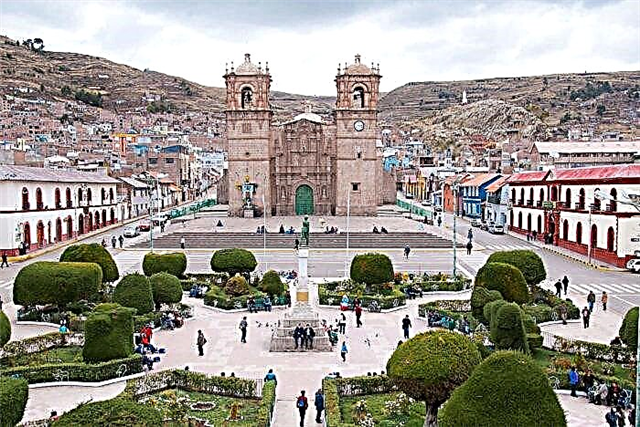
Huaraz
It stands on the Santa River in the west of the country. The city has repeatedly suffered from earthquakes and dam breaks. The nearby Huascaran National Park is named after the mountain, the highest point in Peru. On its territory there is a unique object - the Lianganuco lagoon. Hiking in the Andes is a popular tourist destination. To the east of the city lies the Chavin de Huantar archaeological site.
Population - 129,100 people (2020).

Tumbes
The city borders on Ecuador. The region is famous for its fine sand beaches and picturesque lagoons. Diving, windsurfing, water skiing are the main leisure activities. Tumbes has interesting architecture, including the cathedral and the complex of buildings around the central square. Various excursions start from Pizarro Bay. The nearby islands can be explored either with a guide or on your own by renting a boat.
Population - 107,500 people (2020).

Talara
The port city is located at Cape Parinyas. Before the arrival of the colonists, there were only sand dunes in this area. Oil production has transformed a humble settlement into a thriving city. At the entrance, guests are greeted by a statue of Jesus Christ installed on the platform. Sandy beaches are one of the reasons to visit Talara. There is a forest 24 kilometers away - an unusual phenomenon for a desert region.
Population - 97,500 people (2020).

Jaén
The administrative center of the province of the same name in the north of the country. The city museum tells about the culture of marriages. Other attractions: private reserve Gotas de Agua, botanical garden, cathedral, built in a modern style. Near Jaén in 2010, archaeologists found more massive structures made of stone, similar to ancient pyramids. They were built between 800 and 2000 BC.
Population - 81 100 people (2020).

San Vicente de Cañete
Founded in 1556. Lima is about 140 kilometers away. After the abolition of slavery, the bulk of the hard work was shifted to the shoulders of the Chinese. The city has preserved an Asian-style house and a Japanese temple - unique buildings for Peru. Wines from this region are also known outside the country. In the last week of August, Canyete hosts the Black Art Festival.
Population - 70 800 people (2020).



